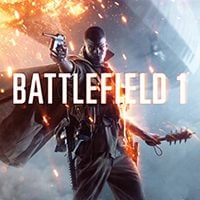Shooting
From this subchapter you will learn some basic information on how to handle weapons in order to kill your opponents as quickly as possible. First, some notions regarding weapons statistics are explained, for the sake of clarity.
Glossary
Recoil causes weapon's movement upward or sidewards when shooting. You can select the direction of recoil in weapon's settings. The most intuitive setting is upward. Having experience from other games is also helpful with that.
Dispersion causes bullets hit the target around the exact point you are aiming at. Dispersion increases with each bullet shot. Support rifles are an exception from that - in this case dispersion decreases with each shot. It is higher when you move and much higher when you shoot from the hip. Respectively, it lowers when you crouch or go into prone.
First shot recoil is a value that multiplies a weapon's recoil for the first shot. Every gun has a stronger "kick" in its first shot than it does later. This is normally 1.5-3 times bigger. Keep note of that when you are using bursts.
Exhaust velocity is the speed at which the bullet exits the barrel. This is important when you shoot at moving or distant targets.
Recoil control
Each weapon has its recoil value ascribed to it, which is constant. In order to hold the crosshair at your target you must pull the mouse toward you while shooting. The recoil strength depends on the type of weapon and its rate of fire. The best way to get acquainted with a weapon is to log onto an empty server and fire off a few clips into a wall. This way you will learn how to control recoil. This may seem difficult at first, but as you are getting more and more experienced you will be doing this automatically. If you play on PC, it is good to set the mouse sensitivity so to get the maximum precision.
Dispersion control
Dispersion control sounds much easier in theory, but it is a lot more problematic in actual combat. This is more unpredictable than recoil, and the player cannot see it - you have to use your experience to determine whether you can hit an opponent or not. You can control recoil by making pauses in shooting, i.e. fire short bursts. Depending on the distance and weapon you are using, bursts must vary in duration and intervals.
Continuous fire - this is self-explanatory. Use this shooting mode at a distance not longer than 20 meters. This is most effective when your target is fully exposed.
Long bursts - shoot bursts of 7-10 bullets, then release the trigger for a very brief moment and start another long burst. This way you reset the dispersion without wasting much time. Use this method at a distance of 10 to 30 meters.
Steady bursts - these are short, accurate series of 3-5 bullets. Unlike in the previous mode, the interval between bursts should be relatively long - before starting another one make sure that the crosshair is in the right place. During intervals you may hide behind a cover. This method is most effective at 25-40 meters.
Single fire - used at long distances. You can either fire single shots manually or set weapon's fire mode to semi-automatic. Shooting single bullets is effective only when you are aiming at the head.
Remember though, that these values are just estimates and also depend on the weapon's accuracy. On the battlefield, you should base your decisions on your personal experience and not just quick facts from a guide - these may be some help, but do not rely on them in 100%. This is why it is best to have 2 rifles for each class, which you should keep using until you master them. The best mode for gaining experience is Team Deathmatch, where there are plenty of opponents to practice on.
Damage taken for shooting particular parts of the body
For all weapons unmentioned in this chapter. The charts below contain multipliers - e.g. if a weapon deals 42 damage, in order to count the damage for a headshot you must multiply that number by 1.7.
Headshot | 1.7 |
Shot in the chest | 1 |
Shot in the abdomen or shoulders | 0.96 |
Shot in the legs or forearms | 0.96 |
Sniper rifles at ideal distance (all types besides Russian 1895 and Gewehr M.95)
Headshot | 1.8 |
Shot in the chest | 1 |
Shot in the abdomen or arms | 0.9 |
Shot in the legs or forearms | 0.75 |
Sniper rifles that deal below 100 damage (Russian 1895 and Gewehr M.95).
The same multipliers are true for shotgun slugs.
Headshot | 1.8 |
Shot in the chest | 1 |
Shot in the abdomen or shoulders | 0.93 |
Shot in the legs or forearms | 0.93 |
Pellet shotguns
Headshot | 1.1 |
Shot in the chest | 1 |
Shot in the abdomen or shoulders | 1 |
Shot in the legs or forearms | 0.9 |
You are not permitted to copy any image, text or info from this page. This site is not associated with and/or endorsed by the Electronic Arts Inc. or EA Digital Illusions/EA DICE. All logos and images are copyrighted by their respective owners.
Copyright © 2000 - 2025 Webedia Polska SA for gamepressure.com, unofficial game guides, walkthroughs, secrets, game tips, maps & strategies for top games.
